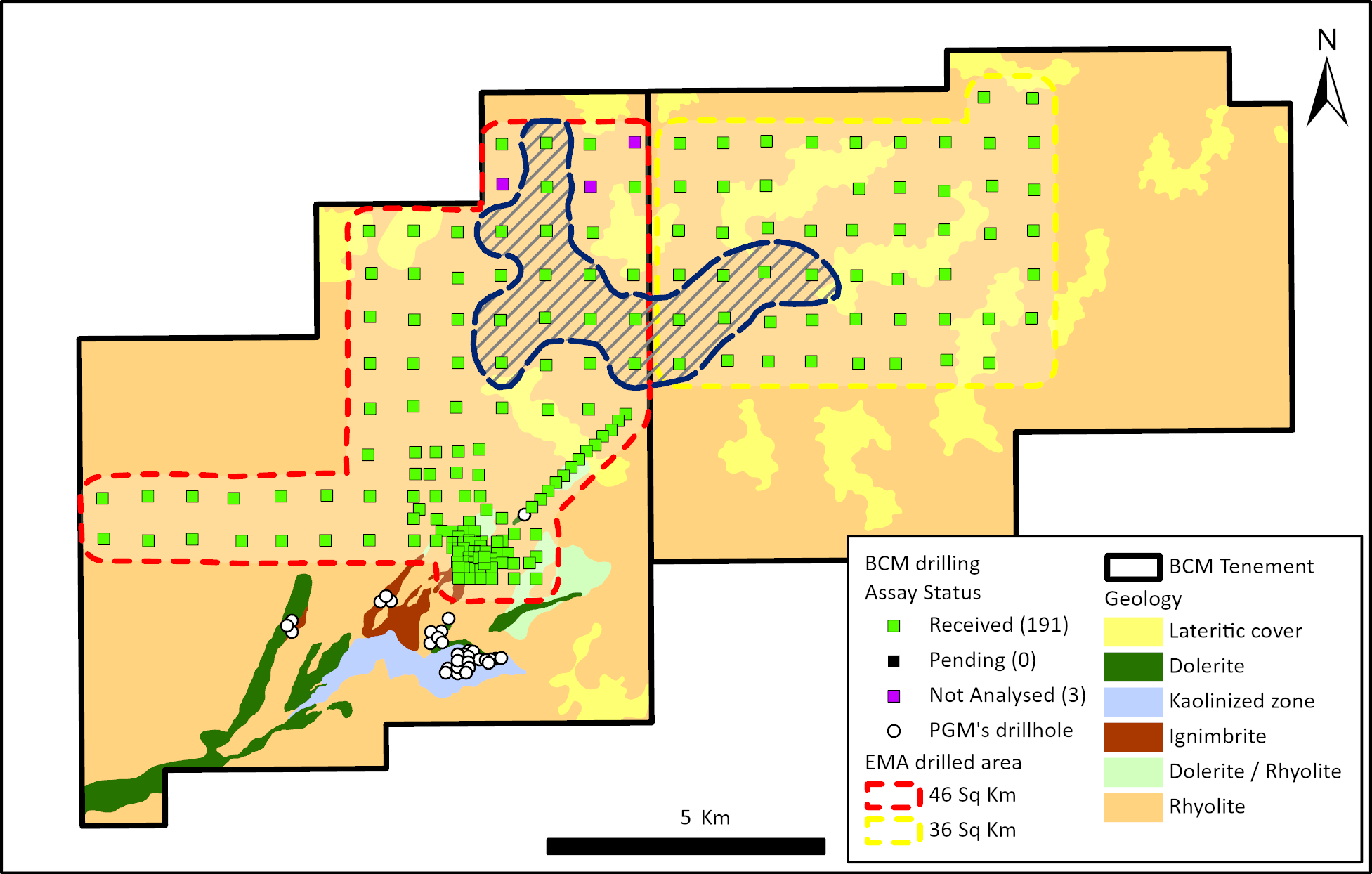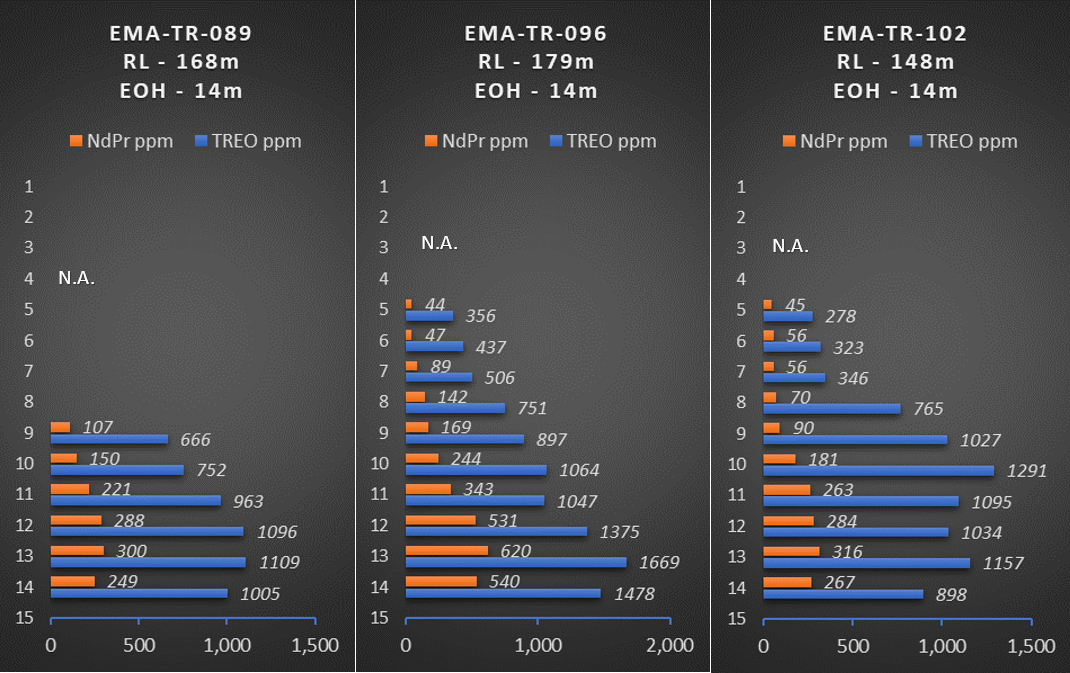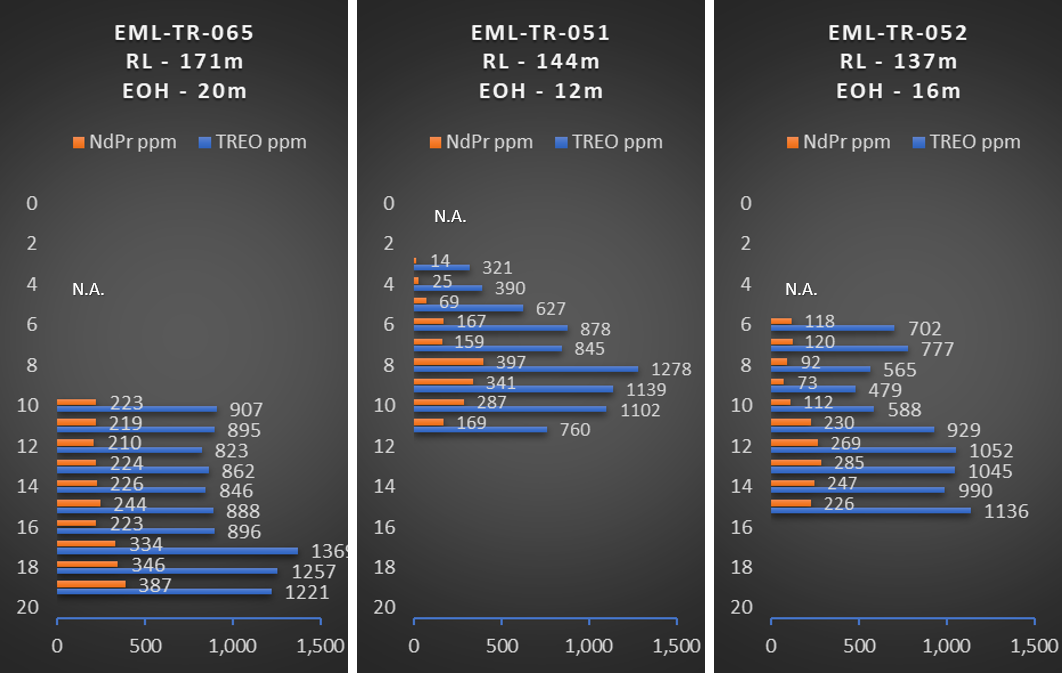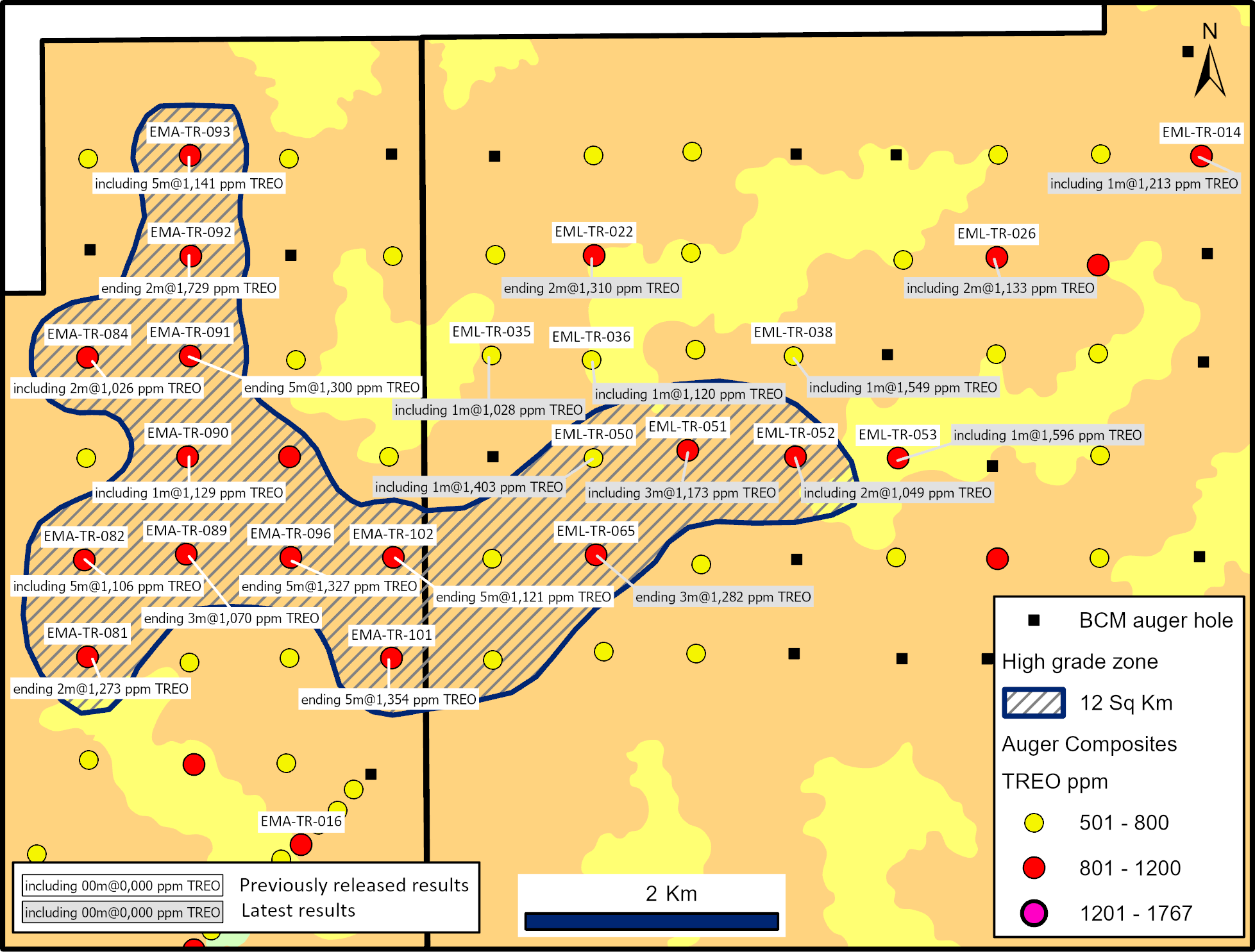EMA Iconic REE
EMA ionic REE project – Chinese style
An aggressive exploration programme for ionic rare earths following up the discovery of REEs in the felsic volcanics and pyroclastics regolith at Ema was conducted on the Ema and Ema East leases.
The EMA iREE project (Ema and Ema East leases) is unique amongst Brazilian REE projects in that it shares almost identical characteristics with the iREE deposits developed over felsic volcanic rocks in southwest China, the world´s largest known ionic clay region.
These leases comprise 189 km2 of felsic volcanic over which 142 auger holes totalling 2,048 metres have been completed to date. A further 53 auger holes totalling 701 metres have been completed at Ema East, testing a total of 82 km2 or 43% of the regolith developed over the felsic volcanics (figure 2).

FIGURE 2 - EMA-EMA EAST REE PROJECT – AUGER HOLES ON 800M CENTRES AND INFILL DRILLING STATUS OVER 82 SQ KM WITH HIGH GRADE 12KM2.
Exploration drilling has been with hand-held auger drills to date, which offer the advantage of low-cost, rapid deployment and mobility. One key constraint of auger drilling is the depth limitation, with the deepest holes, generally containing the highest-grade results, drilled to ~20m. In addition, most of the exploration to date has been conducted across the hill slopes, on widely spaced (800m) centres, with limited drilling in the valleys and foothills, potentially facilitating deeper penetration into the higher-grade zones, where preserved.
Although the holes were drilled at widely differing collar elevations the typical NdPr enrichment is invariably encountered at approximately the same depth, in the saprolite zone immediately above the fresh rock. The enriched zone is generally 10 metres thick, below which grades begin to fall off (Figure 3). Widespread exceptional results at the base of the driiling, in holes 800m apart strongly suggests the presence of a continuous high grade zone. Over a minimum thickness of 10 metres the TREO grade increases significantly with increasing depth from around 500ppm to up to 1,880ppm. Importantly, the proportion of valuable heavy rare earth elements also increases to over 31% at the end of hole.
Holes EMA-TR-091, 092, 093, 089,096 and 102 are a typical ionic horizon of the enrichment horizon in the EMA lease, while EML-TR-065, 051 and 052 (Figures 3) are clear examples of an enrichment zone with similar values to the holes in the contiguous Ema East forming the 12km2 zone high grade zone, with the presence of high grades at the base of drilling, as seen in all of them, suggesting the potential for additional high grades at depth.


Figure 3 – Drill-hole profiles showing typical enrichment zone with high NdPr grades closer to the fresh rock.

Figure 4 -Location map of auger holes in the high-grade zone with TREO values >1,000
Significant results:
- 8m @ 1098ppm TREO from 6m (TR-096), including 5m @ 1327ppm TREO ending in 1478ppm TREO
- 10m @ 1069ppm TREO from 11m (TR-091), including 5m @ 1300ppm TREO ending in 1329ppm TREO
- 7m @ 1149ppm TREO from 10m (TR-101), including 5m @ 1354ppm TREO ending in 1526ppm TREO
- 7m @ 1038ppm TREO from 7m (TR-102), including 5m @ 1120ppm TREO ending in 898ppm TREO
- 10m @ 1059ppm TREO from 10m (TR-110) including 5m @ 1202ppm TREO ending in 941ppm TREO
- 8m @ 921ppm TREO from 10m (TR-092), including 3m @ 1436ppm TREO ending in 1880ppm TREO
- 6m @ 892ppm TREO from 11m (TR-081), including 3m @ 1164ppm TREO ending in 1218ppm TREO
- 6m @ 932ppm TREO from 8m (TR-089), including 3m @ 1070ppm TREO ending in 1005ppm TREO
- 10m @ 926ppm TREO from 9m (TR-093) including 5m @ 1141ppm TREO ending in 714ppm TREO
- 7 m @ 849ppm TREO from 8m (TR-126) including 2m @ 1422ppm TREO ending in 1824ppm TREO



